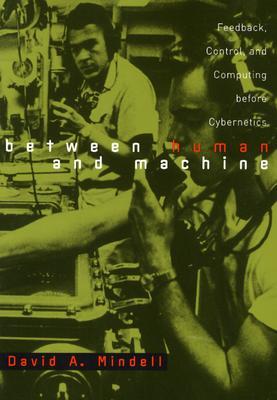Bruno Latour: We Have Never Been Modern (1991–) [EN, PT, RU, ES, CN]
Filed under book | Tags: · anthropology, modernity, nature, philosophy, politics, science, social science, technology

With the rise of science, we moderns believe, the world changed irrevocably, separating us forever from our primitive, premodern ancestors. But if we were to let go of this fond conviction, Bruno Latour asks, what would the world look like? His book, an anthropology of science, shows us how much of modernity is actually a matter of faith.
What does it mean to be modern? What difference does the scientific method make? The difference, Latour explains, is in our careful distinctions between nature and society, between human and thing, distinctions that our benighted ancestors, in their world of alchemy, astrology, and phrenology, never made. But alongside this purifying practice that defines modernity, there exists another seemingly contrary one: the construction of systems that mix politics, science, technology, and nature. The ozone debate is such a hybrid, in Latour’s analysis, as are global warming, deforestation, even the idea of black holes. As these hybrids proliferate, the prospect of keeping nature and culture in their separate mental chambers becomes overwhelming–and rather than try, Latour suggests, we should rethink our distinctions, rethink the definition and constitution of modernity itself. His book offers a new explanation of science that finally recognizes the connections between nature and culture–and so, between our culture and others, past and present.
Nothing short of a reworking of our mental landscape. We Have Never Been Modern blurs the boundaries among science, the humanities, and the social sciences to enhance understanding on all sides. A summation of the work of one of the most influential and provocative interpreters of science, it aims at saving what is good and valuable in modernity and replacing the rest with a broader, fairer, and finer sense of possibility.
Originally published as Nous n’avons jamais été modernes. Essai d’anthropologie symétrique, La Découverte, 1991
Translated by Catherine Porter
Publisher Harvard University Press, 1993
ISBN 0674948386, 9780674948389
157 pages
wikipedia
publisher
google books
We Have Never Been Modern (English, trans. Catherine Porter, 1993, updated on 2012-7-17)
Jamais fomos modernos. Ensaio de antropologia simétrica (Portuguese, trans. Carlos Irineu da Costa, 1994, added on 2013-9-13)
Нового Времени не было. Эссе по симметричной антропологии (Russian, trans. Д. Я. Калугина, 2006, added on 2013-9-13)
Nunca fuimos modernos. Ensayo de antropología simétrica (Spanish, trans. Víctor Goldstein, 2007, added on 2013-9-13)
我们从未现代过. 对称性人类学论集 (Chinese, trans. 刘鹏 and 安涅思, 2011, added on 2013-9-13)
See also Latour’s Inquiry into Modes of Existence: An Anthropology of the Moderns (2012/2013)
Comment (0)The Myth of the Machine, 2 Vols: Technics and Human Development & The Pentagon of Power (1967/1970–) [DE, YU, RU, ES]
Filed under book | Tags: · art, critique of technology, history of science, history of technology, labour, language, machine, power, science, technology

Mumford explains the forces that have shaped technology since prehistoric times and shaped the modern world. He shows how tools developed because of significant parallel inventions in ritual, language, and social organization.
Publisher Harcourt, Brace & Jovanovich, 1967 and 1970
342 and 496 pages
Wikipedia (EN)
Mythos der Maschine. Kultur, Technik und Macht (German, trans. Liesl Nürenberger and Arpad Hälbig, both volumes, 1977, updated on 2014-3-19)
Pentagon moći: Mit o mašini 2 (Serbo-Croatian, trans. Nikica Petrak, 1986/2009, added on 2014-3-19)
Mif mashiny: tekhnika i razvitie chelovechestva (Russian, trans. T. Azarkovich and B. Skuratov, 2001, DJVU, added on 2014-3-19)
El mito de la máquina. Técnica y evolucion humana (Spanish, trans. Arcadio Rigodón, 2010, added on 2014-3-19)
El mito de la máquina. El pentágono del poder (Spanish, trans. Javier Rodríguez Hidalgo, 2011, added on 2014-3-19)
David A. Mindell: Between Human and Machine: Feedback, Control, and Computing before Cybernetics (2002)
Filed under book | Tags: · computing, cybernetics, engineering, history of computing, history of technology, industry, information theory, machine, military, networks, noise, science, technology, telephone

Today, we associate the relationship between feedback, control, and computing with Norbert Wiener’s 1948 formulation of cybernetics. But the theoretical and practical foundations for cybernetics, control engineering, and digital computing were laid earlier, between the two world wars. In Between Human and Machine: Feedback, Control, and Computing before Cybernetics, David A. Mindell shows how the modern sciences of systems emerged from disparate engineering cultures and their convergence during World War II.
Mindell examines four different arenas of control systems research in the United States between the world wars: naval fire control, the Sperry Gyroscope Company, the Bell Telephone Laboratories, and Vannevar Bush’s laboratory at MIT. Each of these institutional sites had unique technical problems, organizational imperatives, and working environments, and each fostered a distinct engineering culture. Each also developed technologies to represent the world in a machine.
At the beginning of World War II, President Roosevelt established the National Defense Research Committee, one division of which was devoted to control systems. Mindell shows how the NDRC brought together representatives from the four pre-war engineering cultures, and how its projects synthesized conceptions of control, communications, and computing. By the time Wiener articulated his vision, these ideas were already suffusing through engineering. They would profoundly influence the digital world.
As a new way to conceptualize the history of computing, this book will be of great interest to historians of science, technology, and culture, as well as computer scientists and theorists.
Publisher Johns Hopkins University Press, 2002
ISBN 0801868955, 9780801868955
439 pages
Mindell’s lecture about the book at MIT (video, 78 min, 2002)
Review (Larry Owens, History of Science and Technology)
Download (removed on 2014-9-18 upon request of the author)
Comment (1)
